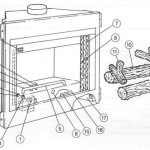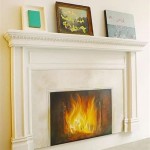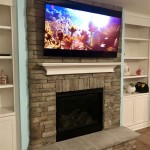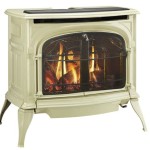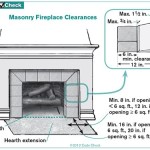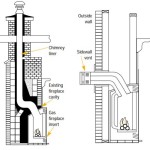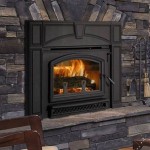Gas Fireplace Inserts with Glass Doors: A Comprehensive Overview
Gas fireplace inserts offer a convenient and efficient method of upgrading an existing masonry or manufactured wood-burning fireplace. These inserts slide directly into the existing firebox, transforming it into a modern, clean-burning heating appliance. A key feature of many gas fireplace inserts is the inclusion of glass doors, which significantly contribute to both the functionality and aesthetics of the unit.
This article will explore the various facets of gas fireplace inserts with glass doors, encompassing their operational principles, advantages, types, installation procedures, safety considerations, and maintenance requirements. The information provided aims to offer a complete understanding of these appliances for homeowners considering upgrading their fireplace.
Understanding the Operation of Gas Fireplace Inserts
Gas fireplace inserts operate by burning natural gas or propane to generate heat. The gas is supplied via a connection to a gas line, and the combustion process takes place within a sealed firebox. The heat produced is then distributed into the room through various methods, depending on the design of the insert. Most modern gas fireplace inserts utilize a combination of radiant heat and convection heating. Radiant heat emanates directly from the flames and the hot surfaces of the unit, while convection heating involves circulating air around the firebox, warming it, and then distributing it back into the room through vents or a blower system.
The inclusion of glass doors on a gas fireplace insert plays a crucial role in its operational efficiency. The glass doors create a sealed environment, preventing drafts and uncontrolled airflow that can rob the fire of heat and reduce its efficiency. The sealed environment also allows for a more controlled combustion process, resulting in cleaner burning and reduced emissions.
The operation of gas fireplace inserts is typically controlled by a remote control, a thermostat, or a wall-mounted switch. These controls allow the user to adjust the flame height, heat output, and blower speed (if applicable). Some models even offer programmable thermostats, allowing for precise temperature control and energy savings.
The venting system is another critical aspect of gas fireplace insert operation. Unlike traditional wood-burning fireplaces that vent directly into a chimney, gas fireplace inserts typically utilize a direct vent system or a B-vent system. Direct vent systems draw combustion air from outside the home and exhaust combustion gases directly outside through a sealed vent pipe. This system is generally considered the safest and most efficient option. B-vent systems, on the other hand, draw combustion air from inside the house and exhaust combustion gases through an existing chimney. B-vent systems require careful inspection and proper sizing to ensure safe and efficient operation.
Advantages of Gas Fireplace Inserts with Glass Doors
Gas fireplace inserts with glass doors offer numerous advantages over traditional wood-burning fireplaces and even open-front gas fireplaces. These advantages can be categorized into efficiency, safety, aesthetics, and convenience.
Efficiency: Gas fireplace inserts are significantly more efficient than traditional wood-burning fireplaces. Wood-burning fireplaces often lose a large percentage of their heat up the chimney, resulting in low overall efficiency. Gas fireplace inserts, with their sealed fireboxes and controlled combustion, can achieve efficiencies of 70% or higher. The glass doors help to retain heat within the room, further increasing efficiency and reducing energy costs. This improved efficiency translates to lower heating bills and reduced environmental impact.
Safety: Gas fireplace inserts are also safer than traditional wood-burning fireplaces. The sealed firebox prevents sparks and embers from escaping into the room, reducing the risk of fire. The controlled combustion process also reduces the production of carbon monoxide and other harmful pollutants. Furthermore, the glass doors prevent accidental contact with the flames, making them safer for households with children or pets. Direct vent systems eliminate the risk of backdrafting, further enhancing safety.
Aesthetics: Gas fireplace inserts with glass doors offer a significant aesthetic upgrade to existing fireplaces. They are available in a wide range of styles and finishes, allowing homeowners to choose an insert that complements their décor. The glass doors provide a clear view of the flames, creating a warm and inviting ambiance. Some models feature realistic-looking artificial logs, while others offer more contemporary designs with glass media or decorative stones. The ability to customize the appearance of the insert makes it a versatile choice for any home.
Convenience: Gas fireplace inserts are incredibly convenient to operate and maintain. Unlike wood-burning fireplaces, they require no wood chopping, stacking, or hauling. They can be turned on and off with the touch of a button, and the flame height can be easily adjusted. The glass doors also reduce the amount of cleaning required, as they prevent soot and ash from escaping into the room. Regular maintenance typically involves a simple inspection of the venting system and burner components.
Types of Gas Fireplace Inserts with Glass Doors
Gas fireplace inserts with glass doors can be categorized based on several factors, including venting system, fuel type, and style. Understanding these different types is essential for choosing the right insert for a particular application.
Venting System: The most common types of venting systems used with gas fireplace inserts are direct vent and B-vent. Direct vent systems are generally preferred due to their safety and efficiency. They draw combustion air from outside the home and exhaust combustion gases directly outside through a sealed vent pipe. B-vent systems, on the other hand, utilize an existing chimney to vent combustion gases. B-vent systems require careful inspection and proper sizing to ensure safe operation and prevent backdrafting.
Fuel Type: Gas fireplace inserts can be fueled by either natural gas or propane. Natural gas is typically the preferred fuel source, as it is generally less expensive and more readily available in urban areas. Propane, however, is a viable option for homes that do not have access to a natural gas line. Propane tanks require regular refilling, but they offer a convenient alternative for rural areas. The choice between natural gas and propane will depend on the availability of fuel and the homeowner's preferences.
Style: Gas fireplace inserts with glass doors are available in a wide range of styles, from traditional to contemporary. Traditional inserts often feature realistic-looking artificial logs and a brick-lined firebox. Contemporary inserts, on the other hand, may feature glass media, decorative stones, or a sleek, minimalist design. The style of the insert should complement the décor of the room and reflect the homeowner's personal taste. Some manufacturers also offer custom designs, allowing homeowners to create a truly unique fireplace.
BTU Output: BTU, or British Thermal Units, is a measure of the heat output of the gas fireplace insert. The required BTU output will depend on the size of the room being heated and the climate in which the home is located. A larger room or a colder climate will require a higher BTU output. It is important to choose an insert with the appropriate BTU output to ensure adequate heating.
Glass Door Types: While all gas fireplace inserts covered here include glass doors, the types of glass and door construction can vary. Options include single pane, double pane, and ceramic glass. Double pane glass offers increased insulation and can reduce the surface temperature of the door. Ceramic glass is more resistant to high temperatures and thermal shock.
The choice of gas fireplace insert will depend on various factors, including the existing fireplace, the homeowner's budget, and their aesthetic preferences. Consulting with a qualified installer is highly recommended to ensure that the chosen insert is properly sized and installed.
Installation, Safety and Maintenance
The installation of a gas fireplace insert with glass doors is a critical process that should be performed by a qualified and licensed professional. Improper installation can lead to safety hazards, reduced efficiency, and even damage to the home. The installation process typically involves several steps, including preparing the existing fireplace, installing the venting system, connecting the gas line, and testing the unit.
Preparation: The first step in the installation process is to prepare the existing fireplace. This may involve cleaning the firebox, removing any debris, and inspecting the chimney for damage. The chimney should be thoroughly cleaned and inspected to ensure that it is in good working order. Any cracks or other damage should be repaired before installing the insert.
Venting System Installation: The next step is to install the venting system. Direct vent systems require a new vent pipe to be installed through the wall or roof. B-vent systems utilize the existing chimney, but the chimney may need to be lined with a new vent pipe to ensure proper venting. The venting system must be properly sized and installed to prevent backdrafting and ensure safe operation.
Gas Line Connection: Connecting the gas line to the insert is a critical step that should only be performed by a qualified professional. The gas line must be properly sized and installed to prevent leaks. A shut-off valve should be installed near the insert to allow for easy access in case of emergency.
Testing and Inspection: Once the insert is installed, it should be thoroughly tested and inspected to ensure that it is operating properly. The installer should check for gas leaks, ensure that the venting system is functioning correctly, and verify that the insert is heating the room effectively. A carbon monoxide detector should be installed in the room to provide an added layer of safety.
Safety Considerations: Several safety considerations should be taken into account when installing and operating a gas fireplace insert with glass doors. Never operate the insert if the venting system is damaged or blocked. Always keep flammable materials away from the insert, and never leave the insert unattended while it is operating. Regularly inspect the insert for any signs of damage or deterioration. Have the insert professionally inspected and serviced annually to ensure that it is operating safely and efficiently.
Maintenance Requirements: Gas fireplace inserts with glass doors require minimal maintenance. The glass doors should be cleaned regularly with a glass cleaner specifically designed for fireplace doors. The burner components should be inspected annually for any signs of corrosion or damage. The venting system should also be inspected regularly to ensure that it is free of obstructions. A professional inspection and cleaning every year is recommended to ensure optimal performance and safe operation.

Essex Zc Fireplace Glass Door Woodland Direct Modern Gas Fires Sincovaga Com Br

Glass Fireplace Enclosures Doors Fireworksinc

Benefits Of Glass Doors Fireplace Door Sets Burlington Wi

What Do I Need To Before Light Up My Fireplace

Gas Logs And Fireplace Doors The Fire Place Ltd

Kozy Heat Chaska 34 Gas Fireplace Insert Mazzeo S Stoves Fireplaces

Standard Size Masonry Fireplace Doors Fixed Frame

Top Direct Vent Gas Inserts In D C

Glass Doors Fireplaces

Uniflame Gerri Cabinet Style Fireplace Doors With Smoke Tempered Gla
Related Posts

